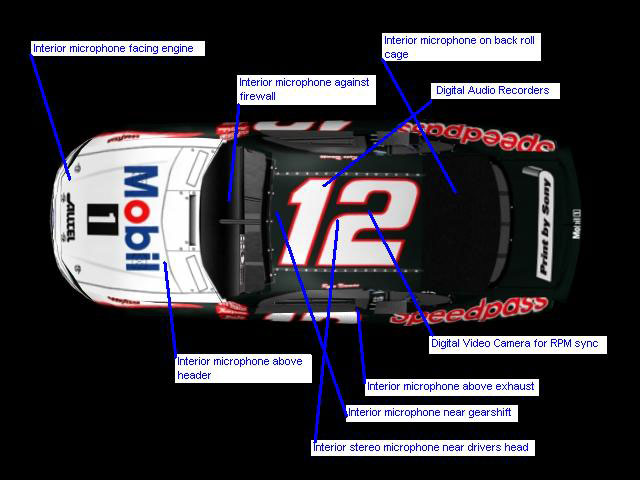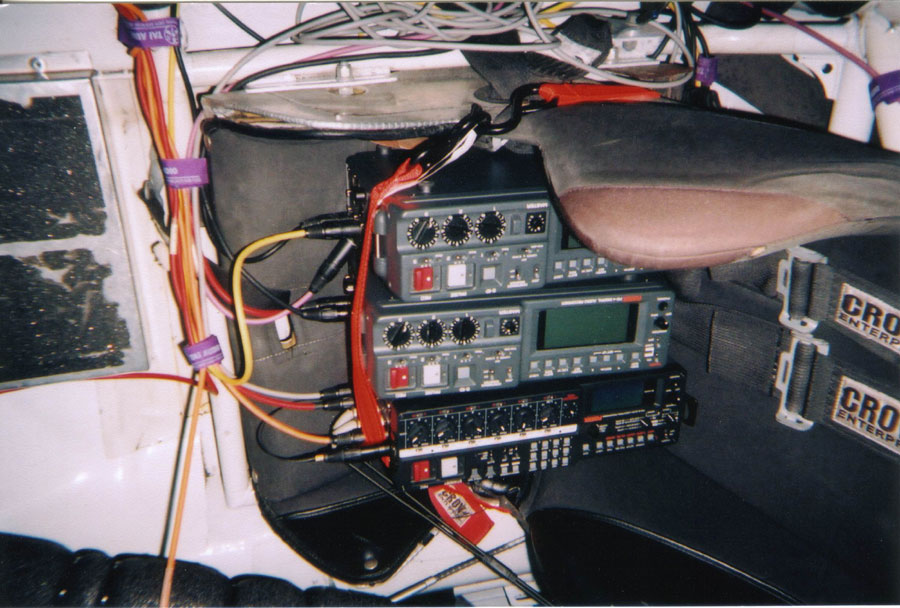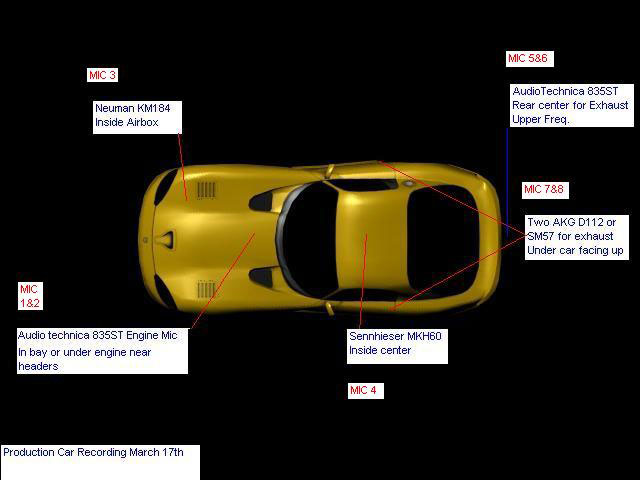NASCAR 2005: Chase for the Cup Designer Diary #3
Lead sound designer Jesse James Allen takes us through the process of creating the aural experience in EA Tiburon's newest stock car racer.
It has been well publicized by now that EA's yearly NASCAR franchise is going through a transition this year. Between a name change--from NASCAR Thunder to NASCAR 2005: Chase for the Cup--and a substantial gameplay and concept redesign, the new game will have a fresh angle to offer racing fans. How will these changes affect the background sounds you'll hear while you're burning rubber? In our third designer diary, EA Tiburon lead sound designer Jesse James will fill you in on what it has been like to create the aural backdrop for the newest NASCAR game.
Racing Sounds
By Jesse James AllenLead sound designer, EA Tiburon

So what exactly is a NASCAR race supposed to sound like? I think of being in an 800-horsepower racecar that is taunting you, begging you to go faster. The snarl of the throttle opening up for that beast to breathe, the attitude of the transmission impatient for your decision on what gear you choose. Then there is the horrific pack sound of over 33,000 horsepower nipping at your heels; that banshee-like whine of wind, tires, and fire-breathing exhausts. The pack is a stampede at 182mph that will run you over if you miss a single mark. That whoosh that nearly shatters your eardrums, that sound that is etched in every racer's memory as the definitive sound of American racecars.
So how does one capture such sounds for a video game? Audio director Aubrey Hodges and I mapped out a plan two months before preproduction on NASCAR 2005 even officially started. If we wanted to make it all sound real, it had to be real to begin with. We booked a NASCAR, a racetrack, and a professional driver for a day of recording. Since there was no textbook way to record a NASCAR in surround [sound], Aubrey and I ran test recordings on production cars out on the highway to figure out what the best way was.
The day finally came for us to put our theories to the test. It took us three hours to wire up the NASCAR at the Richard Petty Driving Experience in Orlando, Florida.
The NASCAR might just be the most unforgiving recording environment known to man. The g-force, the wind noise, the heat, and the vibrations are enough to shake your recording gear to bits (or melt it). The other thing is the sound the engine produces point-blank is in the ballpark of 130 decibels--that's about as loud as a 747 jet at takeoff. Aubrey and I had to do a major search for microphones that could even come close to dealing with these types of dynamics. We also had to build a little self-powered portable recording studio inside the NASCAR to capture the cars' true essence in full digital surround sound.
On the track, driver Tommy King ran lap after lap making the car do everything we could imagine it doing in a race. At the end of the day Aubrey and I could finally stop holding our breath--the gear held up perfectly and the recording turned out great.

Next, we had to record the many production cars for the game. We found the cars through tuning shops and people on message boards over the Internet. Being that we could not risk running personal cars on a racetrack, we decided to record on a device known as a Dynometer. The Dynometer is a device used by tuning shops to dial in performance upgrades to sports cars by mapping out horsepower on a computer. The car is strapped to the Dynometer so it can be driven, but in a controlled stationary setting.
Each car that we hooked up to the Dynometer had its own unique characteristics, so the audio team had to customize the microphone setup each time. We brought in a portable digital audio workstation to record the cars direct to disk in surround sound. We scripted the events the car had to go through to represent things it would do out on the racetrack. Each event the car went through had to be timed, so we could make sure we had enough sources to make game samples.
Back at EA Tiburon we reviewed the recordings and were pleasantly surprised--now it was time to put them in the game. Writing the game code would be complicated if we wanted the engine to act as a real one does. Using EA proprietary tools, I took concepts from all of EA's studios to construct the most elaborate video game car engine on the market today.
The audio engine known as GEN5 was born. The GEN5 engine is fully surround sound-capable and is able to give you a real-time mix of audio perspectives. If the perspective mix is dead center it sounds identical to being in the driver seat of the car (engine in the front speakers, exhaust in the rear speakers.) If the position shifts to third-person perspective you hear a more exhaust-based mix. I then worked with Hudson Kerr from the NASCAR PC team to extract the throttle sounds using advanced pitch mapping techniques and placed them over specific rpm ranges in a process called harmonic layering.
Two weeks of the design were dedicated to just figuring out torque curves for gear shifts and load displacement on throttle. Every rpm is accurate and referenced to in-car race footage, every pitch is original and unsynthesized. This engine sounds real because it is real; we have done everything we can to make the player feel like a driver does when taming the 800HP beast they call a NASCAR.

What I learned about the engine, I then applied to artificial intelligence and pack sounds. Countless hours researching the exact pitch of the famous ambient whine of the NASCAR pack. Doppler shifts based on real track distances were implemented to re-create the famous NASCAR whoosh sound when the AI cars pass you.
Sound is a critical part of racing a car--there is a point in every race where you just have tunnel vision and the sounds you hear are your link to the outside world. We wanted to make players feel as the real drivers do in a race--where it's just you, your car, the pack, the track, a brisk 185mph breeze, and a sound that shakes you down to the core. This is NASCAR Chase for the Cup and you have never heard a race game quite like this one.
Got a news tip or want to contact us directly? Email news@gamespot.com
Join the conversation